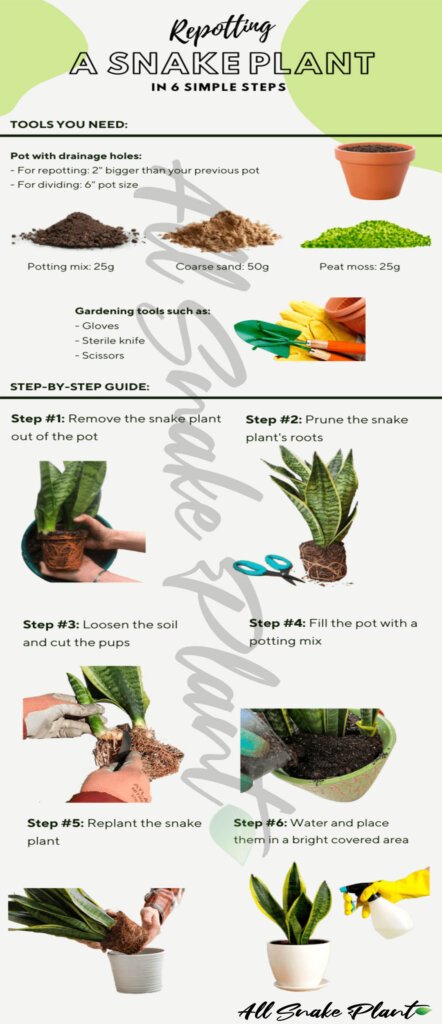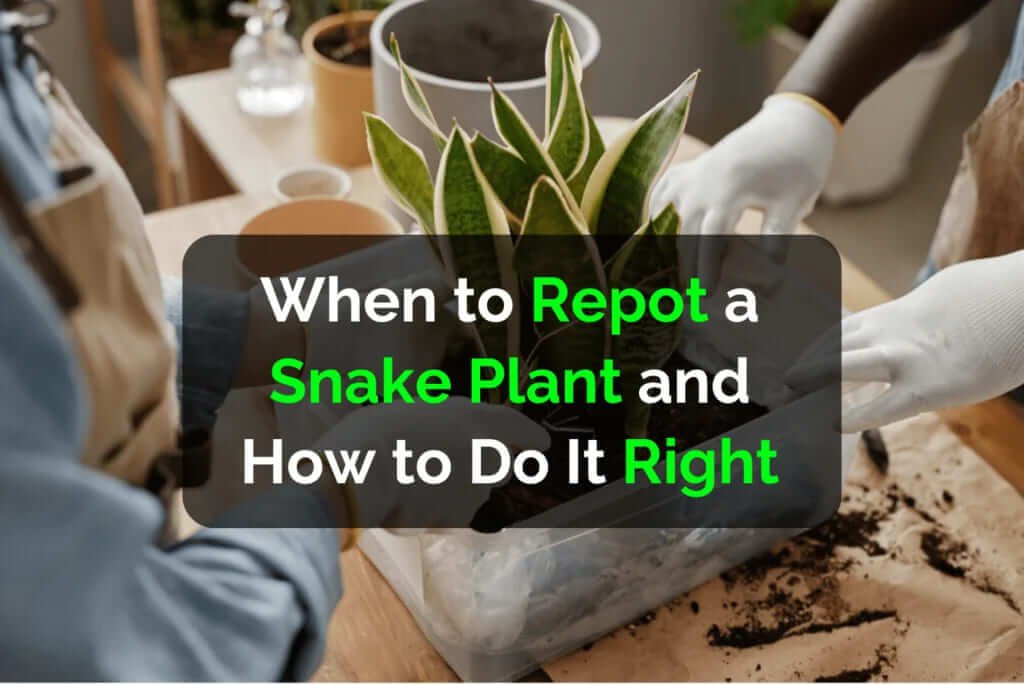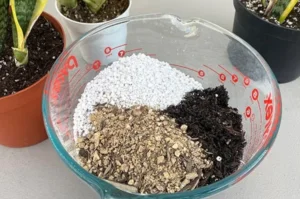Snake plants (also called mother-in-law’s tongue) are some of the easiest houseplants to care for. These striking and low-maintenance plants can survive in various conditions, including low light. But just because they’re hardy doesn’t mean they never need attention. Repotting is necessary for long-term health, and knowing when and how to do it can keep your snake plant thriving. Let’s find out why, when, and how to do it!
What are Snake Plants?
Snake plants, officially known as Dracaena trifasciata, are popular succulent houseplants with long, upright leaves that sometimes have yellow edges. They are native to tropical West Africa and come in many different varieties with unique leaf shapes and patterns. Snake plants are famous for their hardiness, tolerating low light, drought, and (some might say) neglect. They’re also recognized for their air-purifying qualities.
When Should You Repot a Snake Plant?
You should repot your snake plant when it becomes rootbound—meaning the roots have outgrown their container. This typically happens every 2-3 years, depending on the plant’s growth rate.
Why Repotting Matters
Repotting is essential for the health and growth of your snake plant. Over time, the roots may outgrow the container, leading to root bound conditions that can stunt growth and affect the overall health of the plant. Repotting allows the roots to spread out and access fresh nutrients, promoting healthier growth.
Signs Your Snake Plant Needs Repotting
When a snake plant needs to be repotted, look for these symptoms.
- Pot is cracked or bulging.
- Roots showing above the soil or poking out of the bottom.
- No new leaves for a long time.
- Water drains out of the pot too quickly.
- Yellowing or drooping leaves.
Best Time to Repot
The best time to repot your snake plant is during the spring or early summer months when it’s actively growing. This time frame allows the plant to adjust quickly to its new home and bounce back quickly.
How Often to Repot
As a general rule of thumb, snake plants should be repotted every two to three years. However, if your plant is growing rapidly or showing signs of distress, you may need to repot it more frequently.
Potting Tips
1- Drainage is Key:
Choose a pot with proper drainage holes to avoid waterlogging. Learn more about how to choose the right pot for your snake plant.
2- Pot Size:
Choose a new pot just 1-2 inches wider in diameter than the current one. Too big a pot can hold excess moisture and increase the risk of root rot.
3- Pot Material:
Terracotta pots are excellent for snake plants as they promote airflow and help soil dry evenly.
4- Use well-draining soil:
A good potting mix is crucial for healthy growth. Find out which soil mix is best for repotting.
5- Provide Adequate Sunlight:
Snake plants prefer bright, indirect light but can tolerate low light conditions. Place your plant near a window where it can receive sufficient sunlight.
The Best Snake Plant Soil
A well-draining potting mix is crucial. You can either buy a cactus and succulent mix or make your own by:
- 2 parts regular potting soil
- 1 part perlite or pumice
- 1 part coarse sand
The Best Pot for a Snake Plant
Consider these factors when picking the ideal pot:
- Material: Terracotta is best due to its porous nature. Plastic works but dries out more slowly
- Drainage: It is essential to have plenty of drainage holes to avoid soggy roots.
- Size: Just an inch or two wider in diameter than the old pot, no more.
Repotting Steps
For a detailed step-by-step guide, follow this comprehensive article on how to repot a snake plant.

Here’s a quick breakdown of the process:
- Water your plant: Watering a day or two before repotting makes the root ball easier to remove.
- Prepare the new pot: Place a small layer of your chosen potting mix in the bottom of the new pot.
- Remove the snake plant: Carefully tilt the old pot and gently slide out the plant.
- Inspect the roots: Look for mushy or damaged roots and trim them off. If it’s very rootbound, you might need to gently loosen the root ball.
- Place in the new pot: Settle the plant in its new pot and fill the spaces around it with fresh potting mix.
- Water lightly: Give it a light watering to help the soil settle.







1 thought on “When to Repot a Snake Plant and How to Do It Right”
Some genuinely nice and useful info on this internet site, also I think the design holds wonderful features.